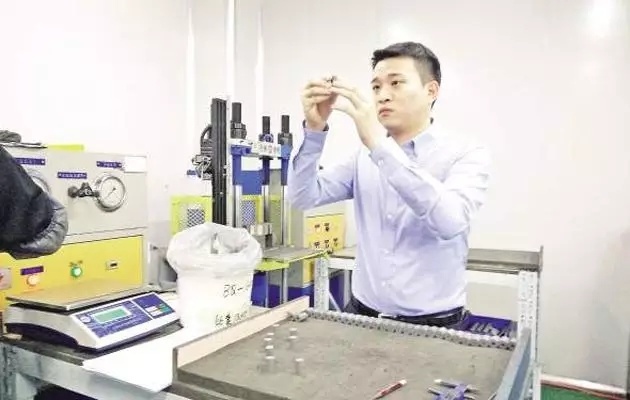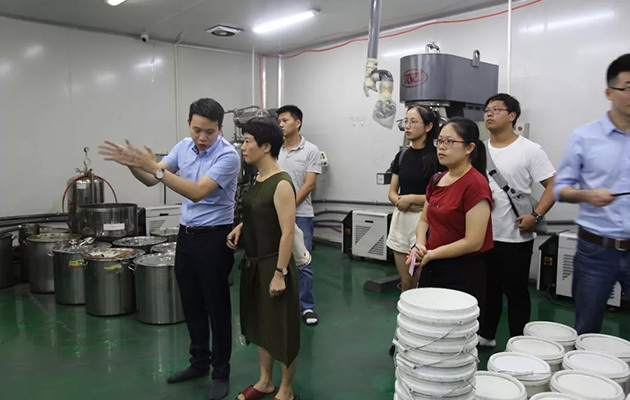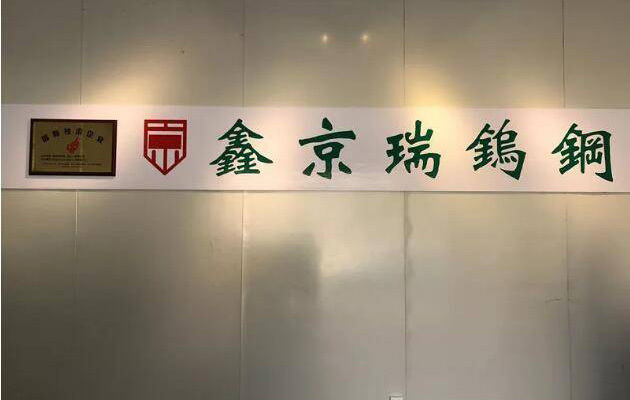15
2022
-
12
A gradient cemented carbide and its preparation method and process
Author:
STREAMARY
The invention belongs to the technological innovation of powder metallurgy cemented carbide production, which can be industrialized and produce considerable economic benefits.
The invention belongs to the technological innovation of powder metallurgy cemented carbide production, which can be industrialized and produce considerable economic benefits.
Background technology: Cemented carbide is a composite material prepared by traditional powder metallurgy method with high hardness and hard metal carbide powder as the hard phase and metals such as co and ni as the bonding phase. Cemented carbide has strong comprehensive properties such as wear resistance, strength and toughness, and is widely used in cutting tools, oil drilling and production, wear-resistant parts and other fields. With the development of science and technology, the end users of the market have higher and higher requirements for the use cost and efficiency of cemented carbide. The traditional cemented carbide is difficult to meet the requirements of high hardness and high toughness at the same time. In cemented carbide materials, hardness and toughness are a pair of contradictions. While improving hardness, it is necessary to reduce toughness as the premise. So many experts have proposed gradient materials that should improve both hardness and toughness, The gradient cemented carbides are mainly studied in terms of composition gradient, that is, the bonding metal co and ni present an increasing distribution from outside to inside in the products. At present, there are many patent reports on the preparation methods of gradient cemented carbide, including the carburization method, the layer-pressing method and the melt infiltration method of the University of Utah in Sweden and the United States. Carburizing method mainly controls the different solubility of carbon in the alloy, resulting in different distribution of cobalt. This process is complex, difficult to control, and not easy to form industrial production; Layered pressing method is easy to homogenize, difficult to form gradient, and the alloy is easy to deform; The melt infiltration method needs to immerse the alloy into the melt at high temperature, which is high in energy consumption and difficult to control the gradient. At present, these gradient alloy preparation methods are complex in process, difficult to control, and difficult to form industrial production.
Technical realization elements: The purpose of the invention is to provide a gradient cemented carbide which is simple, feasible, easy to control and can form industrialization and its preparation method. In order to achieve the above purpose, the invention adopts the following technical scheme: a preparation method of gradient cemented carbide, which comprises the following steps: (1) adding a small amount of zinc powder to tungsten carbide and cobalt powder to prepare a mixture with 8% cobalt content, more than 0 but less than 5% zinc content, and 5.3-5.8% total carbon, which is mixed by wet grinding, and granulated by spray drying; (2) Pre-firing at 700-950 ℃ makes co gradient distribution from the inside to the outside, and then rapidly cooling to obtain solid alloy to maintain the gradient distribution of co; (3) The solid alloy obtained in step (2) is sintered at high temperature in vacuum, zinc is removed, and gradient cemented carbide is obtained after cooling.
Specifically, in step (1), the Feynski particle size is selected as 1.0-4.0 μ M tungsten carbide, 1.0-3.0 μ M cobalt powder, 1.0-5.0 μ M Zinc powder. Further, add alloy cylinder, wet grinding medium and molding agent into the mixture, and mix for 6-40 h under the condition that the ratio of ball to material is 1-5:1 and the ratio of liquid to material is 0.2-0.4l/kg. Preferably, the wet grinding medium is anhydrous alcohol, and the molding agent is 56 # paraffin. Furthermore, the particle size obtained by spray drying granulation is 60-150 μ m。 Specifically, step (2) first presses the spray particles into spherical teeth, and then puts them into a low-pressure sintering furnace for sintering. The pre sintering temperature is 700-950 ℃, the pressure is 1-6mpa, the holding time is 30-180min, the argon flow is 10-15L/min, the power is off, and the extremely cold temperature is normal. Step (3) Vacuum sinter the cooled solid alloy, raise the temperature to 900-1200 ℃, keep it for 30-100min, raise the temperature to 1370-1430 ℃, keep it for 30-100min, pressurize it for 6-10mpa, cut off the power, and cool it to normal temperature with the furnace. The cobalt content of cemented carbide prepared by the above method increases from the outside to the inside. The invention uses a small amount of activator zinc powder as a carrier, adds it to tungsten carbide and cobalt powder, mixes it evenly, and partially carries out zinc melting method at high temperature. At the contact interface between zinc powder and cobalt powder, zinc powder and a small amount of cobalt powder form a co-zinc liquid alloy that wraps the cobalt powder. Under the action of surface tension, the cobalt powder moves inward, and gradually increases from outside to inside. The function of the activator is that when the sintering temperature reaches the eutectic temperature of the activator and cobalt powder, the liquid phase begins to appear. The activator liquid phase wets the cobalt solid phase. The liquid phase moves to the surface of the cobalt particles by capillary pressure. There is a thin layer of liquid phase on the surface of the cobalt particles, which, like a lubricant, causes the friction resistance between the cobalt powder particles and between the cobalt powder and tungsten carbide particles to drop sharply. Due to the effect of surface tension, The liquid tries to reduce the free energy of the gas-liquid surface, make the cobalt powder particles move in a more compact direction, and change the original uniform distribution structure. Cobalt shrinks to the middle, while tungsten carbide particles do not move, resulting in an increasing result of cobalt distribution from the outside to the inside (reflected in the product detection performance: low center hardness, high edge hardness, and increasing distribution of cobalt content from the outside to the inside), and finally remove the activator, The invention uses this mechanism to prepare gradient cemented carbide, which is simple in process operation and easy to control, can realize industrial production, and the prepared cemented carbide has good performance. Figure 1 of the attached drawing of the specification is the energy spectrum of the gradient cemented carbide prepared in Example 1. Figure 2 is the energy spectrum of cemented carbide prepared in proportion 1. Figure 3 is the energy spectrum of gradient cemented carbide prepared in Example 2.
Specific embodiments The present invention is further described by specific embodiments and drawings below:
Example 1: A preparation method of gradient cemented carbide,
It includes the following steps:
(1) Select the Ferdinand particle size of 3.2 μ m. 272.4kg tungsten carbide with 6.11% total carbon and 1.2 Feynski particle size μ M of cobalt powder 24kg, Fischer size 1.8 μ M of zinc powder 3.6kg, forming a mixture with cobalt content of 8%, zinc content of 1.2% and total carbon of 5.548%.
(2) Put the mixture in step (1) into a 300-liter tilting wet mill, add 1.2 tons of alloy grinding rod, 90 liters of anhydrous alcohol, 6.6 kg of 56 # paraffin, and wet grind for 32 hours to obtain the wet grinding slurry.
(3) Unload the slurry, dry it with spray to make granules with a particle size of 80-150 μ M particles.
(4) The above particles are pressed into spherical gear products, which are pre-fired with low pressure furnace dewaxing. The argon flow is 10l/min, the pre-firing temperature is 900 ℃ (zinc cobalt eutectic temperature), the heat preservation is 60min, the pressure is 2mpa, the power is cut off, the fan in the furnace is turned on to cool to normal temperature, and the integrity of gradient distribution is maintained.
(5) Then vacuum sinter the above products and raise the temperature to 1
Previous









